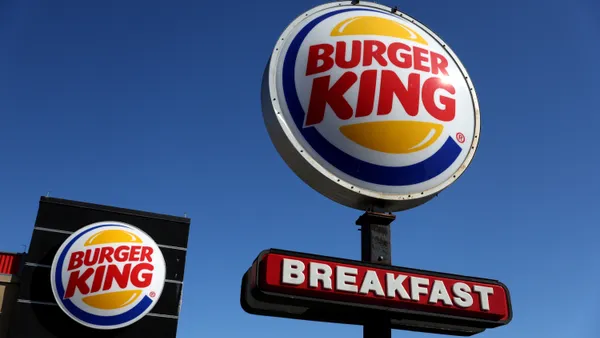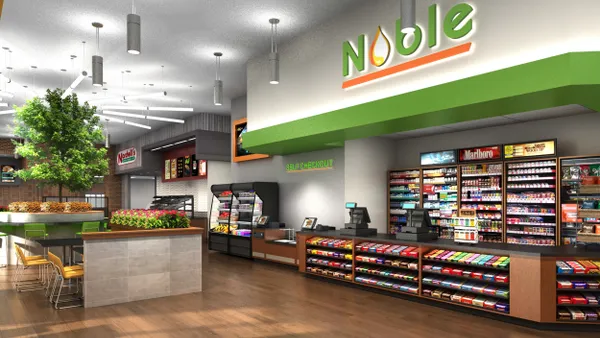Dive Brief:
- Yum’s digital sales made up a record 55% of systemwide sales during the first quarter, CEO David Gibbs said Wednesday during an earnings call. This was the first time digital sales ever made up over 50% of the company’s systemwide sales.
- In Q1, digital sales approached $8 billion, up 11% year over year, and are on track to generate $30 billion in annualized digital sales, “which by itself would represent one of the largest restaurant companies in the world,” Gibbs said.
- Gibbs said digital sales were up due to continued tech deployment across its brands, more consumer adoption of click and collect and stable third-party aggregator sales.
Dive Insight:
Tech deployment helped Yum grow digital sales from about 20% in 2019 to over 50%, Gibbs said. The company has deployed kiosks, a cloud-based point-of-sales system and various back-of-house artificial intelligence and automation tools.
“Our consumers enjoy more convenient and frictionless experiences leading to higher frequency and check sizes,” Gibbs said. “Our franchisees enjoy significant productivity benefits as their team members no longer spend time taking orders and payments for half of all transactions, leading to stronger unit economics.”
The company currently has over 40 AI initiatives in progress, which can help expand marketing, operations, insights, engineering and internal back office functions, he said, adding that many of these initiatives are confidential at the moment.
Taco Bell has been testing voice AI in California at five stores, and the technology is being expanded to 30 stores during the second quarter following positive customer feedback. The chain has been deploying its AI-powered SuperApp, which is a general manager support tool, to make it easier and faster for managers to access operational information to make better decisions. Dragontail also uses AI to enhance multi-channel fulfillment for both customers and employees.
Yum has also started leveraging the data it is collecting through its various systems. During the first quarter, it launched the Red 360 U.S. consumer data insights system, which has been deployed at Pizza Hut U.S. and Taco Bell. KFC U.S. is set to integrate the system during the second quarter. The platform allows the chains to use consumer behavior insights to provide better personalization opportunities on digital and social platforms, Gibbs said.
CFO Chris Turner said Yum has a competitive advantage because of its multi-brand portfolio, global footprint, and the fact it owns the technology it is deploying, like the point-of-sales and Dragontail systems.
“Data is becoming a crucial differentiator, enabling us and our franchisees to generate better insights and make better decisions,” Turner said. “Quick-service restaurants will benefit disproportionately because of the high frequency nature of our consumer business, which results in more data within quick service. … We will leverage our data for insights and to drive more effective marketing and loyalty engagement.”
Yum’s Q1 2024 technology deployment achievements
- Expanded Poseidon POS to 1,800 Taco Bell U.S. restaurants, bringing the total to over 7,000 units
- Added Dragontail AI platform to 500 Pizza Huts, bringing the total to over 7,000 restaurants
- SuperApp is now deployed in nearly 9,500 Pizza Hut and KFC restaurants globally
- Scaled an experience management program, which allows brands to collect insights from consumer reviews across digital channels like third-party aggregators and social media, to 10,000 KFC restaurants and 7,000 Pizza Hut restaurants across 50 countries
- Set up a plan to roll out Dragontail’s kitchen display system and Poseidon POS to KFC U.S. restaurants














